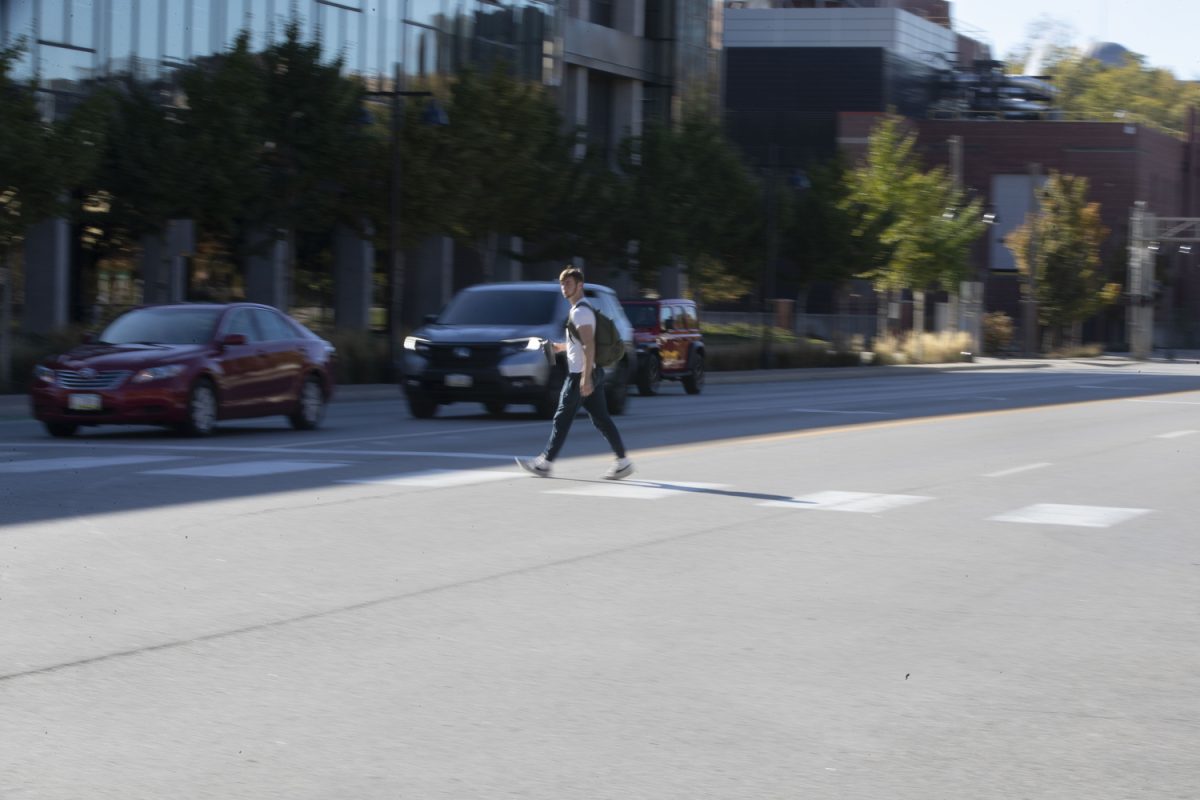A recently released city report shows that Iowa City has significantly fewer pedestrian and vehicle collisions than state and national averages.
The report, which was released in the Sept. 28 Iowa City City Council information packet, showed that from 2017-21, Iowa City had an average of 0.27 pedestrian deaths per 100,000 population. Statewide, this number was 0.7, and nationally the rate was 2.26.
The number of instances where a car collided with a pedestrian has been on a downward trend since 2013. It was especially low during the COVID-19 pandemic, going from 25 collisions in 2018 to 11 in 2020.
The number of collisions has been bouncing back to pre-pandemic numbers, with 2022 seeing 27 collisions.
From 2011-22, there were three pedestrian fatalities, 31 serious injuries, and 155 minor injuries.
The report also identified intersections or streets where pedestrian injuries happened most frequently and severely. The top five locations included:
- Burlington Street and Gilbert Street
- Burlington Street and Clinton Street
- Washington Street and Clinton Street
- Jefferson Street between Madison Street and Clinton Street
- For The Kids Way and Hawkins Drive
The City of Iowa City is constantly working to make intersections safer for pedestrians, Iowa City’s engineer Jason Havel said.
The city makes intersections safer by shortening the distance pedestrians have to walk across roads by narrowing the length of the street or adding medians in the middle of multiple lanes where pedestrians can wait to cross, Havel said.
Adequate pedestrian and bicyclist signage on streets also helps make drivers more aware that they need to pay attention to their surroundings, he said.
Another area where many collisions have occurred was along the State Highway 1 and U.S. Highway 6 corridor, which is near the Iowa City Municipal Airport. Two of the three pedestrian fatalities, as well as 27 percent of all severe accidents from 2013 to 2022, occurred in this area.
Havel said there have been several city projects completed and in the works for the future to improve the pedestrian facilities in the area.
In the last few years, the city added trails or wide sidewalks near the highways to cater to pedestrians in the corridor, he said.
“I think that’s part of it is giving pedestrians a place to go and have it where we can make sure that people that are using those corridors have a safe place to make those movements,” Havel said.
With Iowa City being a walkable town that is home to a large public university, it has always been a priority to make sure there are lots of sidewalks and crosswalks, Sarah Walz, an associate transportation planner for the Metropolitan Planning Organization of Johnson County, said.
“We have sidewalks most places,” Walz said. “That is not true everywhere.”
The University of Iowa also takes steps to ensure pedestrian safety on campus. The UI performs regular upkeep of its sidewalks, pedestrian bridges, and underpasses on campus, Steve Schmadeke, a public relations manager for the university, wrote in an email to The Daily Iowan.
A recent example of infrastructure the UI implemented to increase pedestrian safety is by installing motion-activated lights at the intersections of the T. Anne Cleary walkway on Jefferson Street and Market Street in 2019, Schmadeke wrote.
These lights flash as pedestrians walk by to alert drivers to be aware of when people are crossing the street in the dark.
The UI is always trying to make campus safer for pedestrians, Schmadeke wrote.
“The University of Iowa is a very walkable campus, and we’re always looking for ways to improve safety for our students, faculty, staff, and visitors,” Schmadeke wrote.



